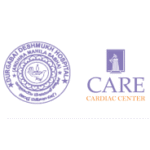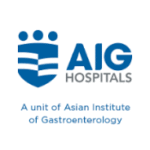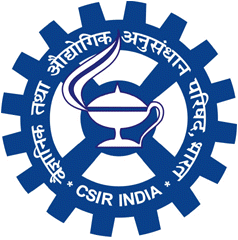Treatments Focus
Best Antibiotic when Needed

Antibiotics have significantly altered the healthcare industry and saved millions of people from premature deaths.
Antibiotics are medications that inhibit the growth or annihilate microorganisms. They fight the infections caused by bacteria in both humans and animals. Antibiotics are usually given for a span of 7 to 14 days – called as ‘antibiotic course’. Your doctor decides the best length of treatment and correct type of antibiotic for you.
Current advances in pharmacogenomic studies enable the doctor in making the right choice of antibiotic drug. Pharmacogenomic study helps to closely understand an individual’s gene information and how their body responds to certain drugs.
Most common infections treated by antibiotics are:
- Acne
- Skin infections
- Conjunctivitis (Pink Eye)
- Otitis Media (Ear Infection)
- Bronchitis
- Upper Respiratory Tract Infection
- Urinary Tract Infection
- Diarrhoea
- Sexually Transmitted Diseases (STDs)
Antibiotic Classes
Just like the are several types of bacteria that exist, there are different types of antibiotics used to counter the specific action of the bacteria and treat the condition.
Antibiotics are grouped into antibiotic classes depending on their similar chemical properties, courses of action, or how they destroy a single strain of bacteria and its related types.
Antibiotic drugs are sold under different brand names. A doctor’s prescription is a must to proceed with any such kind of antibiotic treatment.
Different types of antibiotics include:
- Penicillin: Also called “beta-lactum” antibiotics, are a class of antibiotics effective against limited bacterial infections, such as ear infections.
- Tetracycline: These are used for large variety of bacterial infections such as urinary tract infections (UTIs), intestinal tract infections, eye infections, sexual transmitted diseases and other conditions like acne, periodontitis (gum disease), etc.
- Cephalosporin: They work over a wide range of bacterial infections, such as skin infections, ear infections, strep throat, urinary tract infections, lung infections and meningitis. They function similarly to penicillin.
- Fluoroquinolones: This class of antibiotics are not used commonly due to their multiple adverse side effects, and hence not advised in children. These antibiotics are usually a choice in treatment when the other less toxic antibiotics have failed to improve a bacterial condition.
- Lincomycin: These antibiotics can be used to treat serious infections such as lower respiratory tract infections, bone and joint infections, pelvic inflammatory disease and certain vaginal infections.
- Macrolides: These are often used to treat specific cases such as pneumonia, pertussis (whooping cough), chlamydia and urethritis. Sometimes, they can be prescribed to prevent a possible bacterial infection.
- Sulfonamide: These antibiotics are effective for the treatment of urinary tract infections (UTIs), treatment or prevention of pneumocystis pneumonia, or ear infections.
- Glycopeptide Antibiotics: This class of antibiotics are used in conditions where the bacteria are resistant or no longer responding to beta-lactams and other antibiotics. For example enterococcal infections such as endocarditis.
- Aminoglycosides: These antibiotics are known to act rapidly. They are usually administered intravenously (IV route), inhaled or also available in ophthalmic (eye) dosage forms.
- Carbapenems: These are a class of beta-lactam injectable antibiotics that are used for a wider range of diseases. These are used treat to moderate to life-threatening bacterial infections such as kidney infections, pneumonia, stomach infections, etc. These are often used as ‘last-line’ agents for serious infections to help prevent resistance.
Antibiotics for Children
Most childhood infections are caused by viruses. Therefore, children do not often need antibiotics. Antibiotics only treat conditions that are caused by bacterial infections. If your healthcare provider has prescribed antibiotics to your child, it can be to subside a fever that is not decreasing, or in case of severe ear pain, and infection in both eardrums.
Antibiotics provide quick relief, and your child may feel better rafter 2 or 3 days of using them.
Judicious Use of Antibiotics
There is an appropriate usage and inappropriate usage of antibiotics, especially in infants and young children. Among clinicians’ judicious use of antibiotics is often implied to the practice of ‘reducing antibiotic use’.
Healthcare staff can use instructions from the available Stewardship Programs that direct on the drug usage and other safety indications. They highlight on the dose, route, and duration of antibiotics use.
Wise use of antibiotics is insisted to achieve/implement the following:
- To reduce over usage or over prescription of antibiotics (especially among hospitalized children)
- To prevent the spread of antibiotic resistance within community that occurs during treatment of various acute diseases
- To avoid inappropriate prescription, which is the main cause of antibiotic resistance
Judicious use of antibiotics is promoted largely because of the threat of antibiotic-resistant pathogens.
Dizziness or lightheadedness, or unsteadiness
Nausea
Vomiting
Headache
FAQ's :
References:
- Patient. https://patient.info/infections/antibiotics-leaflet Accessed on 14-07-2022
- A Guide to the 8 Most Common Classes of Antibiotics. A G Scientific. https://agscientific.com/blog/8-most-common-classes-of-antibiotics.html Accessed on 14-07-2022
- Antibiotics Guide.com https://www.drugs.com/article/antibiotics.html Accessed on 14-07-2022
- What is ‘judicious use of antibiotics’ and is it achievable in children? International Journal of Infectious Diseases. https://www.ijidonline.com/article/S1201-9712(14)00559-1/fulltext Accessed on 14-07-2022
- Pharmacogenetic tests. Medline Plus. https://medlineplus.gov/lab-tests/pharmacogenetic-tests/ Accessed on 14-07-2022
Related Articles
Book an Appointment to understand how GenepoweRx can help you in treating
Best Antibiotic when Needed
Meet The Doctors
Dr Kalyan Uppaluri
Dr Hima Challa
Your genetics … Your Test ... Your Health Success
It’s always the word of mouth that’s the best advice. Here are some of our…


Our Partners






Professional Partnerships
Government Association

